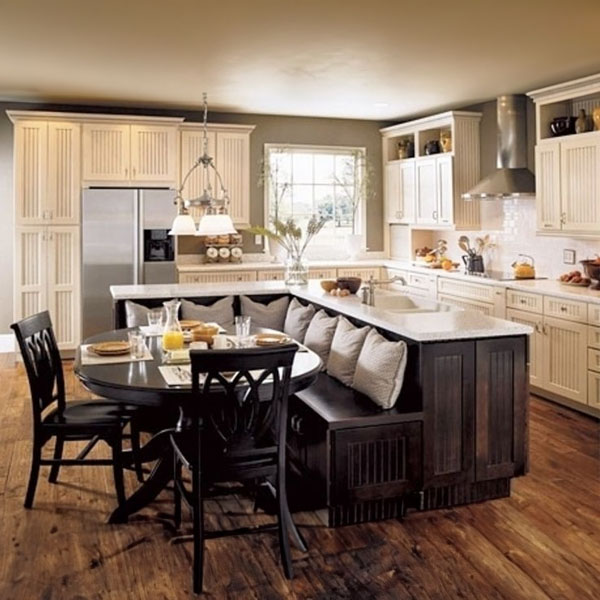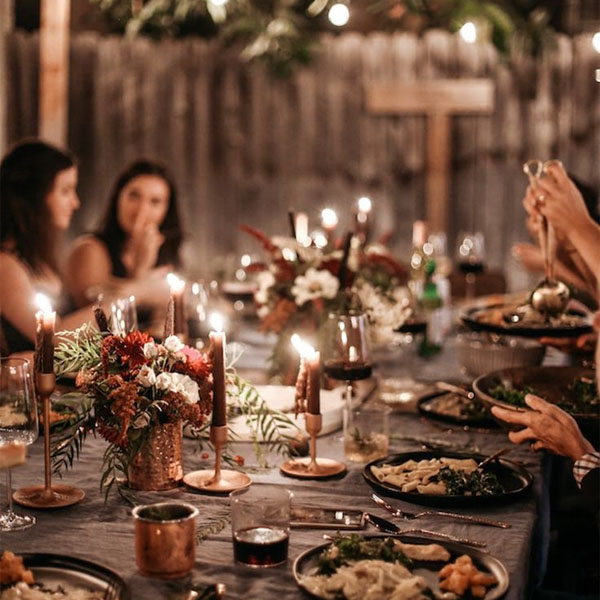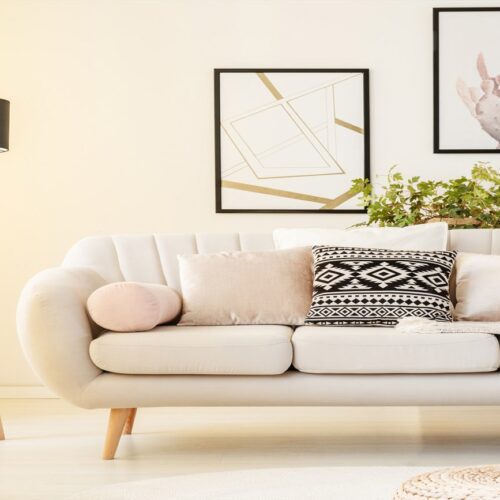The restaurants of Mayfair provide an exquisite dining experience but sometimes, cooking from home can be the perfect social event.
A kitchen is the hub of social activity in the home. Whilst a living room provides the comfy sofa, the TV and an ideal relaxation area, the kitchen is where more just than cooking happens. Ideal for hosting romantic meals between loving couples, a focus area for dinner parties, or a communal hub for large gatherings, it’s where relationships are formed, and sometimes broken, where memories are made, and tales are told.
Much of the reason for it providing this welcoming and comforting environment is in its design. From the wall décor to the flooring and seating options, to the equipment layout and beyond. The functionality and the ambience of your kitchen go a long way to making it the part of the home everyone feels most welcome in.
In this blog, we look at how the design of your kitchen can make dinner parties a success.
Why is the kitchen layout important for a successful dinner party?
Depending on how you want to host your party, you may have several ideas for how your guests interact and eat their meals. Some could be detrimental to the vibe of your party; others may hinder the process of getting food out. That being said, there are plenty of ways that you can have dinner party success by the way you utilise your kitchen.
By providing guests with space, vibrant surroundings, and comfort, you help put them at ease, making them feel comfortable in a home that is not their own. A cramped corner table with no room to manoeuvre makes for an uncomfortable place to eat and an awkward experience for hosts and guests. A hot stuffy kitchen with poor ventilation suddenly allows the “if you can’t stand the heat” saying to become relevant very quickly!
It isn’t just about comfort and appearances though. You should also be considering social interaction. Your workflow as the chef, the use of multi-functional spaces and how efficient storage will be essential. If you factor these into the layout of your kitchen, dinner parties soon become an event that runs like a well-oiled machine.
Designing your kitchen for entertaining
We’ve put together a selection of some of the key attributes your kitchen should have if you are looking to regularly host dinner parties.
Give your kitchen zones
When you start to have visions of the perfect hosting environment, you’ll have lots of grand ideas, but with them, have you factored in the number of people likely to be using the room?
The way people move around your kitchen will be key to how comfortable they feel at a dinner party. Squeezing past as you cook for them so they can get to the bathroom won’t provide the best hosting or guest experience. So, look to create zones and a flow, that enables guests and chefs to have plenty of floor space they can call their own.
Think about how and where you want the guests seated. Will an island or breakfast bar match your visions? Or will that restrict your workspace? Could a table work better, creating a little distance between the cook and the visitors? You could even combine the island and table idea with the island acting as part of a workstation dividing guests from the chef but keeping them close enough for conversation and drinks to flow. The table then is the base for those about to consume your culinary delights.
On your side, where the cooking takes place, consider the practical nature of your zone. Ideally, you want a sink, oven, fridge and worksurface all nearby. This keeps the guests on one side and you on the other, providing you with an efficient workspace. Just remember to keep pathways wide enough for people to pass if there are no alternative routes. A cramped passing as we said earlier, isn’t always comfortable!
Finally, within this zoning, factor in whether you will be facing your guests as you cook. You may want to keep your chef skills hidden from view, but it won’t necessarily allow for the most harmonious of environments.
KEY TIP: Keep the workstation separate from the guest, allowing optimal space for you to prepare food and optimal space for them to socialize.


Optimise storage
Your dining area is going to be a hub of activity. Cooking and eating aside, it may also double as the place guests decide to engage in other entertainment you provide. Therefore, floorspace and practicality become essential. Look for ways to keep areas decluttered. This could mean items stored behind doors for example. Think dishwasher, pantry, washing machine, for example. It could also mean shoes, coats, and other items you may commonly leave over chairs or on mats.
Removing clutter from workspaces and floors not only makes the kitchen look nicer but it also helps you locate items when cooking.
In addition to optimising storage and space for the cook, you should look at storage that benefits the guests. Glasses and cutlery should be placed nearer the diners for ease of access. Perhaps factor in open shelving, or a glass cabinet for this. Maybe even consider a drinks fridge. Nobody likes to see their glass left empty and if you can leave this task to the guests, it frees up your time as a cook and host.
Spaces with more than one use, like your kitchen in this instance, benefit from pull-out racks, dividers and drawers housed within larger drawers, enabling you to keep spaces clean and clear. Factor this into the design and you can keep your kitchen free from excess all the time and not just when entertaining.
KEY TIP: Open shelving is great for the items guests will need constant access to but use doors to cover over dishwashers, washing machines and other appliances. It makes everything look neater!
Optimise your surfaces
The surfaces in a kitchen have as much to do with hygiene and cooking as they do with aesthetic appeal and ambience. So, whether it be kitchen flooring or worktops, you want to look for something that provides appeal in appearance, practicality, and ease. LVT flooring for example comes in a wood and stone effect, providing the kitchen with an easy-to-clean, durable surface that is designed with antimicrobial properties that help reduce bacteria by 99.9%! Its natural appearance provides your kitchen with a style to complement your overall kitchen appeal.
When it comes to other surfaces, you should factor in how your guests feel and what provides the best look for your kitchen. Natural stone can look great, but it can be cold to the touch, this may not sit well with your diners. Then looking at your prep areas, you want something easy to clean and visually attractive. You should take note that ideally, the materials used for the workstation, your hob, and around the sink will likely not be the best options for the areas your guests use.
KEY TIP: Think ambience, think touch, think hygiene and understand that the same surface is not necessarily the best for all areas of the kitchen.
Think about appliances
You may want the cooking appliances to complement your kitchen, but a key consideration, aside from how they look, is how they perform and how noisy they can be.
Your guests will want to hear each other throughout the evening, and the noise of a dishwasher could hinder that possibility. Likewise, if your cooking has doused the kitchen in an array of aromas, the smells may become a little off-putting after a while, so an extractor becomes essential.
With these two examples, look for appliances with minimal noise. You’ll soon see the change in ambience when people no longer need to shout to be heard.
Appliances aren’t all about noise though. They are also about being practical. Consider plate warmers to keep your dishes at a nice temperature, think about a coffee machine for after-dinner drinks, and think about wine coolers for drinks with the meal.
Perhaps the biggest appliance to consider is the one you cook with. An AGA or a double oven could be the game changer you need. This would allow multiple items to be cooked without worry that certain dishes may not be ready in time.
KEY TIP: Consider low-noise appliances and those that can make your job easier. This not only provides a more welcoming environment but gives you more opportunities to be with your guests rather than being immersed in tasks.
















